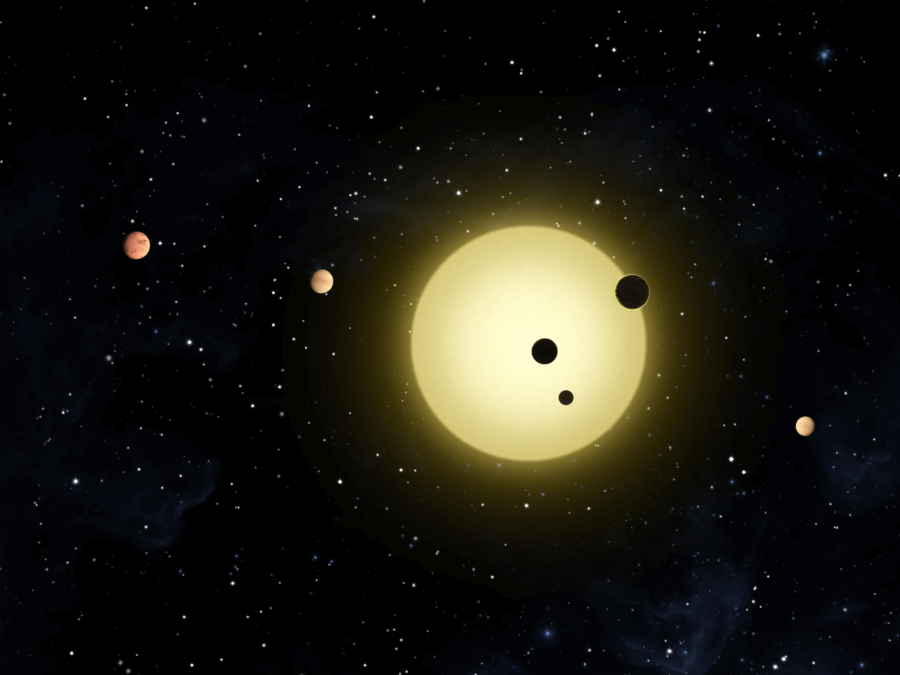NASA’s 7 New Planets
Not so long ago in a galaxy far, far away…
Only just a week ago, several scientists at NASA came across an amazing discovery: several Earth-sized planets orbiting a single star in a different solar system. NASA has dubbed this group of planets “TRAPPIST-1” and three of them are supposedly in the so called “hospitable zone”. In fact according to NASA, this discovery is a treasure trove and sets a new record for the “greatest number of habitable-zone planets found around a single star outside our solar system.” As interesting as the discovery is, why does it matter?
After all, TRAPPIST-1 is roughly 40 light years from Earth; or as Forbes puts it: “using today’s rocket technology (and a whole lot of cash), it would probably take about 11,250 years to get to TRAPPIST-1.” To put that in perspective, human civilizations as we know them have only been around for 6,000 years. Hinduism (the oldest of all major, modern religions) has only been around for 4,000 years. Similarly, Islam (the youngest of all of the major, modern religions) has only been around for 2,000 years. In between the two thousand years from Hinduism to Islam, Buddhism, Confucianism, Taoism, Christianity, Judaism, and many other religions were created. In the same timeframe, great dynasties and civilizations rose and fell, countless wars were fought, and the birth of modern society as we know it developed. However, that entire 6,000 year time period is only about half of the time it would take to reach these new planets with today’s technology. Humans could literally go back in time and rewrite the same amount of history and only be halfway done with their trip to TRAPPIST-1. To almost anyone, this discovery would seem like a waste of time. So again, why does it matter?
Well, while we wait for technology to be created that could actually get humans (still living) to TRAPPIST-1 in a reasonable amount of time, there is a lot to learn about these planets from far away. In their report on the discovery, NASA does discuss the fact that “all of [the] seven planets could have liquid water – [the] key to life as we know it – under the right atmospheric conditions,” and that the few planets that remain in the hospitable zone are the most promising. NASA also says that it will conduct further studies to test the atmosphere of the planets to see if they are conducive to holding liquid water or even life. The age old question “are we alone” is a question that we may never truly answer (and if we do, hopefully it’s on peaceful terms), but these seven planets could get us that much closer to the answer; that is why this discovery is so important.
The discovery doesn’t mean that we have to rush the creation of technology to develop spaceships that can travel at lightspeed so that we can colonize other planets in the fear of our star suddenly exploding. Contrary to what Star Wars, Star Trek, or any other space-related film may say, we don’t have to be great space explorers. Frankly, that isn’t what the scientists at NASA even have in mind. To them, this discovery will allow us to study Earth-like planets (planets that could be possibly near replicas of Earth) and see if it’s possible if life does exist beyond our star. This discovery could finally get us one step closer to finding out whether or not if we are alone or if our planet is truly unique. NASA’s discovery will require a lot of future research, but the potential of what it has to offer in its results are quite extraordinary.
For more specific information on the discovery from NASA itself: https://www.nasa.gov/press-release/nasa-telescope-reveals-largest-batch-of-earth-size-habitable-zone-planets-around

My name is Robert Corl and I am a Senior at Air Academy High School. I have been on Air Academy's Speech and Debate team for four years now and have competed...













Jake Werner • Mar 2, 2017 at 12:23 pm
Awesome story! I would be so cool if we could go there and colonize them. Perhaps some day.
Joseph Cordaro • Mar 2, 2017 at 12:15 pm
Great story! I guarantee us and even our children will get to earn what’s on those planets, but it’s pretty cool how they can tell whether another planet has the potential for life.
Lauren Berg • Mar 2, 2017 at 12:15 pm
This is so cool and insightful
Carter Rodny • Mar 2, 2017 at 12:13 pm
Wow! Outta this world! Great job.
Luke Negley • Mar 2, 2017 at 12:13 pm
How did they not know there were 7 more planets!!!! That’s so cool
Whitney Moran • Mar 2, 2017 at 12:12 pm
This is so exciting! I hope we see colonization on other planets in our lifetime!
Jessica Cox • Mar 2, 2017 at 12:12 pm
That’s crazy that we are able to discover planets that are so far away!